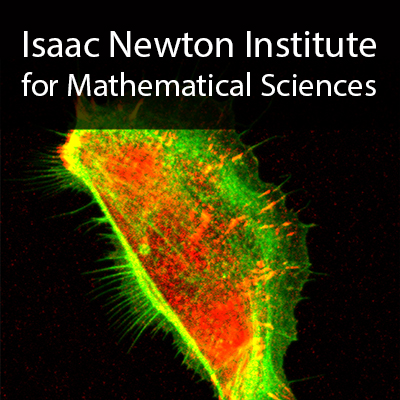Moving Cells Throughout the Embryo: A Story from the Neural Crest
58 mins 53 secs,
107.71 MB,
MP3
44100 Hz,
249.73 kbits/sec
Share this media item:
Embed this media item:
Embed this media item:
About this item

| Description: |
Kulesa, P (Stowers Institute for Medical Research)
Thursday 17th September 2015 - 10:00 to 11:00 |
|---|
| Created: | 2015-09-29 15:38 |
|---|---|
| Collection: | Coupling Geometric PDEs with Physics for Cell Morphology, Motility and Pattern Formation |
| Publisher: | Isaac Newton Institute |
| Copyright: | Kulesa Stowers, P |
| Language: | eng (English) |
| Distribution: |
World
|
| Explicit content: | No |
| Aspect Ratio: | 16:9 |
| Screencast: | No |
| Bumper: | UCS Default |
| Trailer: | UCS Default |
| Abstract: | Co-authors: Rebecca McLennan (Stowers Institute), Linus Schumacher (University of Oxford), Jason Morrison (Stowers Institute), Ruth Baker (University of Oxford), David Kay (University of Oxford), Philip Maini (University of Oxford)
The neural crest are an excellent model to study in vivo mechanisms of embryonic cell migration since cells display directed migration in discrete streams that travel long distances to precise targets. In the vertebrate head, cranial neural crest cells form bone, cartilage, neurons and glia making their migration absolutely critical to craniofacial patterning. How neural crest cells move as a coordinated population is not well understood. We have discovered that coordinated cranial neural crest migration includes lead cells with distinct cell dynamics, cell morphologies and molecular profiles consistent with maintaining directed migration. Our single cell profiing of leaders has revealed a unique molecular signature of genes highly expressed and consistent within a trailblazer subpopulation narrowly confined to the migratory front. We hypothesize that trailblazer genes serve a critical functional role for neural crest cells to establish directed migration and separate instruc tional signals are communicated to trailer cells to follow. We will discuss our modeling and experimental results. |
|---|---|
Available Formats
| Format | Quality | Bitrate | Size | |||
|---|---|---|---|---|---|---|
| MPEG-4 Video | 640x360 | 1.93 Mbits/sec | 854.50 MB | View | Download | |
| WebM | 640x360 | 959.74 kbits/sec | 413.56 MB | View | Download | |
| iPod Video | 480x270 | 521.15 kbits/sec | 224.51 MB | View | Download | |
| MP3 * | 44100 Hz | 249.73 kbits/sec | 107.71 MB | Listen | Download | |
| Auto | (Allows browser to choose a format it supports) | |||||

